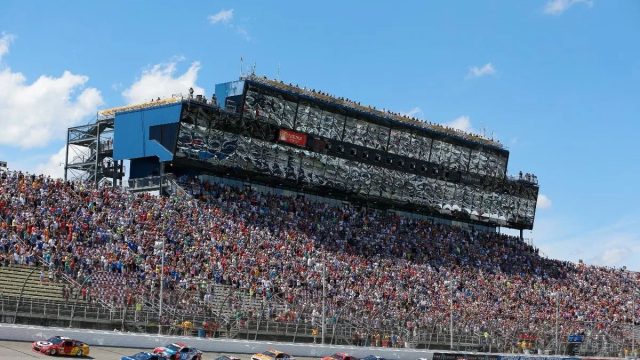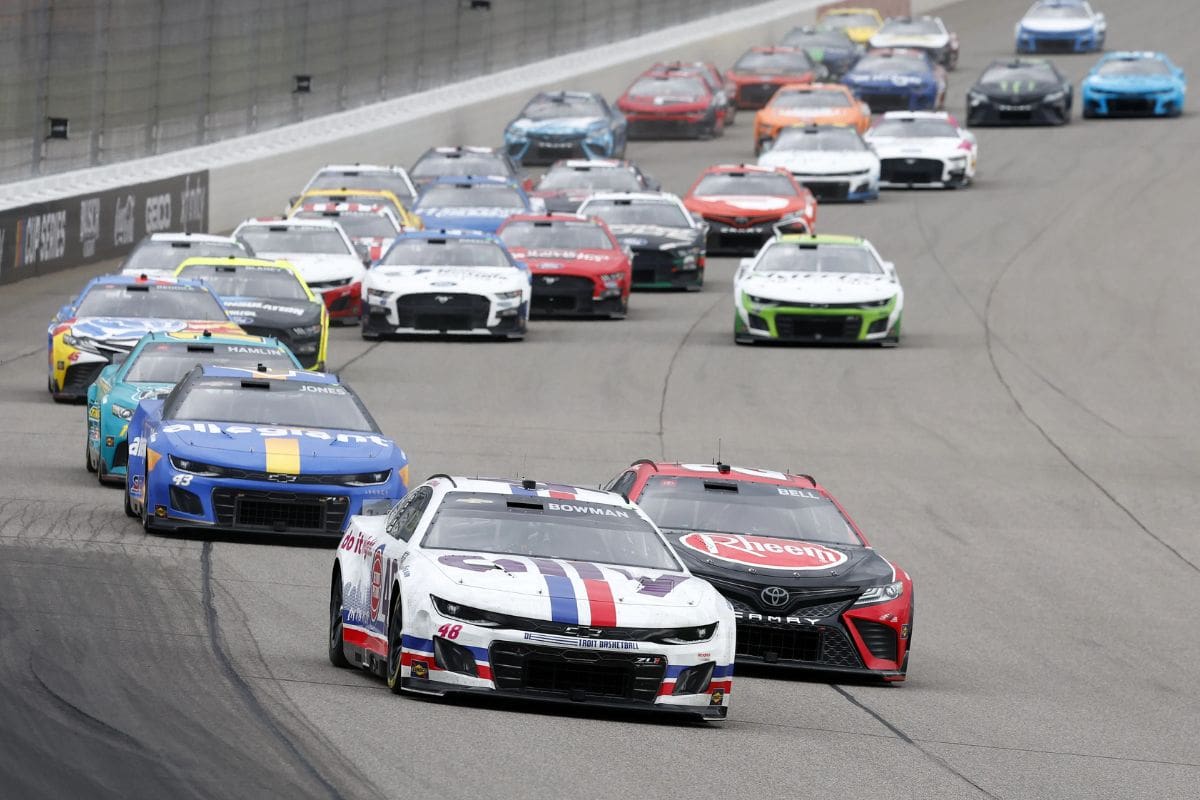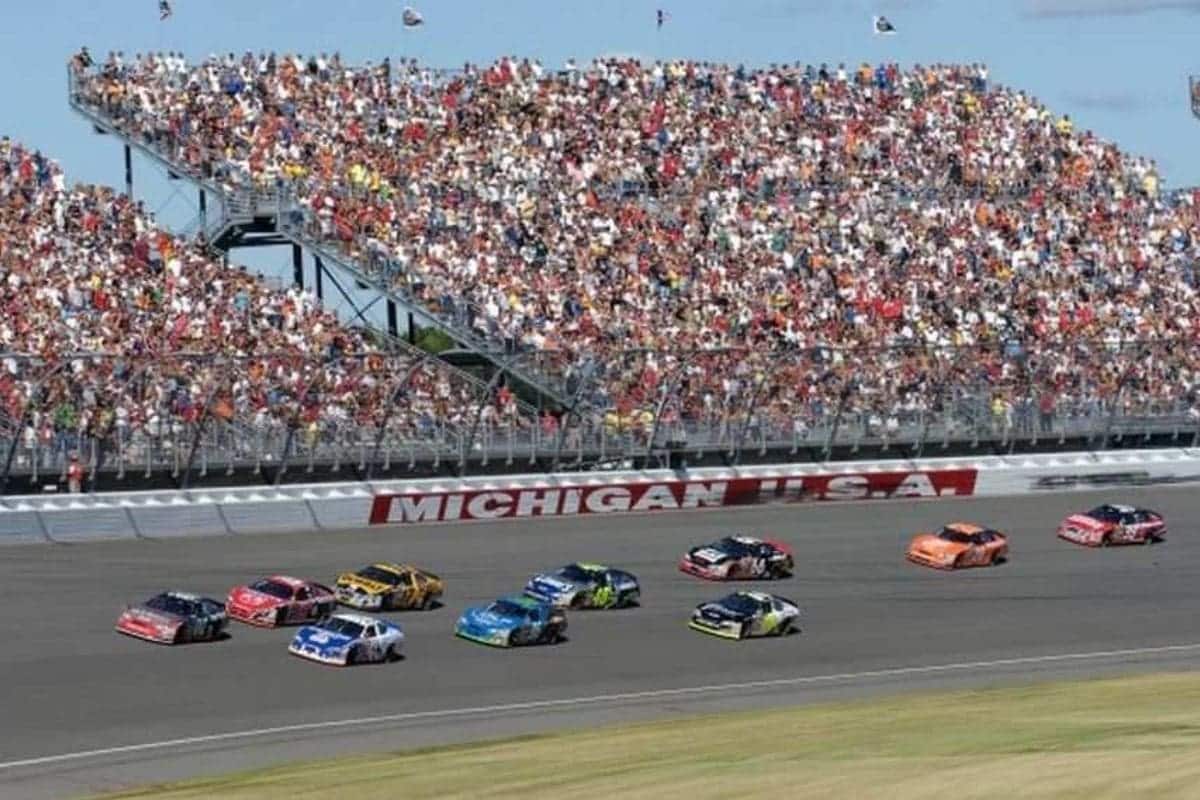Michigan’s First 51 Laps: The initial 51 laps of the Michigan race provided a revealing snapshot of the competitive landscape, marked by Chase Elliott‘s early command and Ryan Blaney‘s astute Stage 1 strategy that emphasized the critical nature of timing and positioning. Weather delays tested the drivers’ resilience, while Bubba Wallace’s performance highlighted Toyota’s potential amidst Denny Hamlin‘s struggles. Furthermore, Ford’s strong representation in the top 10 raises questions about their tactical advantages. As the race progresses, the interplay of strategic decisions and tire management will be crucial in shaping the outcome, prompting a closer examination of what lies ahead.
Key Highlights
- Weather-induced delays led to the race’s postponement after 51 laps, highlighting NASCAR’s commitment to safety.
- Ryan Blaney’s Stage 1 victory emphasized the importance of timing and strategic positioning in challenging conditions.
- Chase Elliott’s early lead and secured stage points underscored his consistency in championship pursuits.
- Bubba Wallace showcased Toyota’s potential, while Denny Hamlin’s spin out illustrated the volatility of race outcomes.
- Ford drivers Briscoe and Logano’s strong positions and historical dominance at Michigan suggest promising prospects for the remainder of the race.
Race Overview and Delays
The unpredictable nature of weather played an essential role in the unfolding of the FireKeepers Casino 400 at Michigan International Speedway, where the race faced delays due to rain. Initially scheduled to unfold without interruptions, the event was blemished by inclement weather that ultimately led to the postponement of the race after just 51 laps.
This early phase of the race was characterized by two caution periods, emphasizing not only the treacherous conditions but also the drivers’ need to navigate the track with caution and skill.
Despite the adverse weather, all 36 competitors remained active, showcasing the resilience and competitive spirit prevalent within the NASCAR Cup Series. Chase Elliott, driving the No. 9 Hendrick Motorsports Chevrolet, emerged as the leader during this segment, demonstrating tactical skill and adept handling of his vehicle in challenging conditions.
Following closely were Martin Truex Jr., Bubba Wallace, Alex Bowman, and Tyler Reddick, who rounded out the top five, indicating a competitive field with potential for shifts in dynamics as conditions evolved.
The decision to postpone the race reflects NASCAR’s commitment to safety and fairness, particularly in view of the unpredictable weather patterns that can dramatically alter race approach and outcomes.
As the race is set to resume Monday morning, teams will need to reassess their strategies and adjust to the evolving track conditions, which will be vital in determining the eventual victor of this highly anticipated event.
Positioning and Strategy Insights
Tactical positioning played an essential role in the dynamics of the race during the initial 51 laps at Michigan, particularly as drivers navigated the complexities of weather and track conditions. The decisions made by drivers, especially during vital moments, highlighted the fine line between risk and reward in race strategy. Significantly, Bubba Wallace’s choice to pit rather than capitalize on a strong lead exemplifies the intricate calculus teams must undertake. This gamble could either solidify his standing for the playoffs or jeopardize his chance at an important victory.
The tactical landscape was further complicated by the competitive interplay among key contenders. Ryan Blaney’s victory in Stage 1 emphasized the significance of timing and positioning in capitalizing on opportunities. Meanwhile, Chase Elliott’s ability to secure stage points while others faltered showcased the importance of consistency in maintaining a strong championship position.
Toyota’s Performance: Highs and Lows
Toyota’s performance at Michigan highlighted a contrasting narrative, with moments of promise and setbacks that shaped the early stages of the race. Bubba Wallace displayed exceptional skill during Stage 1, executing a thrilling tactic that not only propelled him into competition but also served as a proof of the potential of the Toyota lineup. Wallace’s ability to navigate traffic and seize opportunities reflected the tactical expertise that teams aim for on this challenging circuit.
However, the optimism surrounding Toyota’s prospects was blemished by Denny Hamlin’s misfortune. His spirited battle for position against Kyle Larson quickly turned into a cautionary tale when he lost control, spinning out on the frontstretch. This incident not only derailed Hamlin’s momentum but also resulted in a disappointing 22nd-place finish in Stage 1. Such dramatic highs and lows encapsulate the volatility inherent in motorsports, where a single misstep can undermine a promising campaign.
Despite the setback, the landscape remains favorable for Toyota, particularly for Hamlin, who possesses a commendable track record at Michigan. With ample racing left in the event, there is plenty of opportunity for redemption.
The contrasting fortunes of Wallace and Hamlin serve as a reminder of the unpredictable nature of racing, highlighting the need for resilience and tactical adjustments as the race unfolds.
Ford’s Performance and Prospects
A considerable portion of Ford’s success at Michigan can be attributed to the strong performances of key drivers, particularly Briscoe and Logano, who currently hold positions within the top 10. Their ability to navigate the complexities of the 2-mile oval speaks to the effectiveness of Ford’s engineering and tactical race planning.
With three Ford drivers collecting stage points, including Blaney’s stage win, the manufacturer is exhibiting a competitive edge early in the race.
Historically, Ford has enjoyed a dominant run at Michigan, having claimed victory in the last nine Cup races here dating back to 2018. This legacy boosts the team’s morale and sets a benchmark for performance expectations.
The presence of seasoned competitors like RFK Racing’s Chris Buescher and Brad Keselowski, finishing fifth and seventh respectively, further solidifies Ford’s standing this weekend. Their collective drive highlights the potential for a resurgence in the latter stages of the race.
As we look ahead to the final 149 laps, the prospects for Ford appear promising. The combination of tactical pit stops, tire management, and ideal drafting can play crucial roles in maintaining their positions and potentially securing extra stage points.
News in Brief: Michigan’s First 51 Laps
The initial 51 laps of the Michigan race highlighted the critical interplay of strategy, positioning, and tire management among the drivers. Chase Elliott’s early lead and Ryan Blaney’s tactical insight exemplified the significance of timing in competitive racing.
Meanwhile, Toyota’s mixed results and the strong showing from Ford drivers indicate a competitive landscape. As the race progresses, the ability to adapt to evolving conditions and make tactical decisions will prove crucial for securing victory.
ALSO READ: NASCAR’s Michigan Race Rescheduled: Fans Fume Over Weather Chaos



